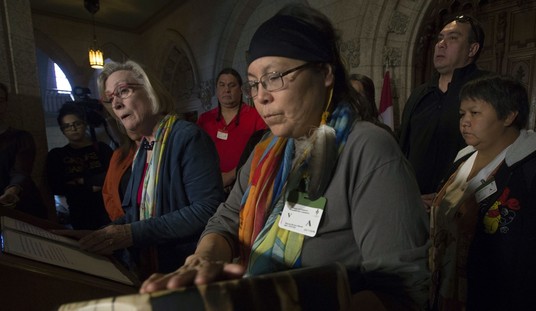A recent study has found that Canadian teen boys are more likely to be victims of physical dating violence, a disparity that has been documented — but rarely reported on — by researchers in other English-speaking countries.
The study, “Ten Year Trends in Physical Dating Violence Victimization Among Adolescent Boys and Girls,” draws from a survey that was administered to nearly 30,000 students in 7th through 12th grade in western Canada.
“During the past 12 months, did your boyfriend or girlfriend ever hit, slap or physically hurt you on purpose?” the study asked Canadian teens, along with dozens of other questions about eating habits, grades, and friendships.
The results can be found in the latest issue of the Journal of Interpersonal Violence.
Lead researcher Elizabeth Saewyc — a professor at the University of British Columbia — told PJ Media on Sunday by phone that the difference in victimization is “small but statistically significant.”
For example: In 2003, boys were 2.6 percent more likely to report physical dating violence. In 2008, boys were 2.7 percent more likely to report dating violence. And in 2013, boys were 0.6 percent more likely to report physical violence from their partner.
“While it’s a small difference because the overall percentages are fairly small, two or three percentage points might not seem significant. But when you look at that difference over thousands and thousands of high-school kids, it’s huge” Saewyc told PJ Media.
Boys are “50 percent more likely to report physical dating violence” said Saewyc, and that’s “a gap that has been more or less consistent for the last two decades.” While it’s a counterintuitive finding, Saewyc urged readers to put themselves in the place of teens.
“Think about how generally unacceptable for boys and young men to actually haul off and slap a girl. But for girls, there isn’t the same social sanction for hitting a guy, whether they’re dating or not,” said Saewyc.
Violence against men “doesn’t raise the same outrage,” she added.
“So, the other part of this is thinking about for boys, a lot of social scripts say boys are supposed to be stoic, in charge, and tough. If you’re a boy and you’re experiencing physical violence from your girlfriend, there’s a lot of extra shame that goes with that.”
So boys who find themselves in violent relationships may be especially reluctant to tell an adult. “Who’s a young boy facing violence going tell? Who’s going to be sympathetic and supportive instead of shaming?”
Warren Farrell — most recently the author of The Boy Crisis — told PJ Media by email Sunday that he’s known about the physical violence disparity since the late ’90s, when he was researching for his book Women Can’t Hear What Men Don’t Say (1998).
“I uncovered eighteen studies of teen dating violence, ranging in time from the early ’80s to mid-’90s. About fourteen of the studies found the women to be more frequently violent, and especially more likely to be violent in more severe ways,” he recounted.
“In one study, by Jan Stets and Debra Henderson (published in Family Relations in 1991), women were 15.8 percent more likely to admit to using physical violence, and were about 8 percent less likely to be victims,” he added, citing this study.
Violence against men is typically overlooked “because our survival as a species has been dependent on training our young men to be disposable—disposable either in war or in the workplace,” Farrell theorized.
“Heroic intelligence prepared boys for a short life; they were not prepared for health intelligence, or a long life; they were not prepared to express their feelings, but told to ‘suck it up’ or ‘man up,’” he added.
“Solutions begin with training our sons to develop health intelligence–to speak up, not shut up. Society should challenge the belief that just because a son is male, he has male privilege and that it is women’s time to speak up, and it is his time to shut up,” Farrell added.
Follow the author of this article on Twitter: @Toni_Airaksinen.










Join the conversation as a VIP Member